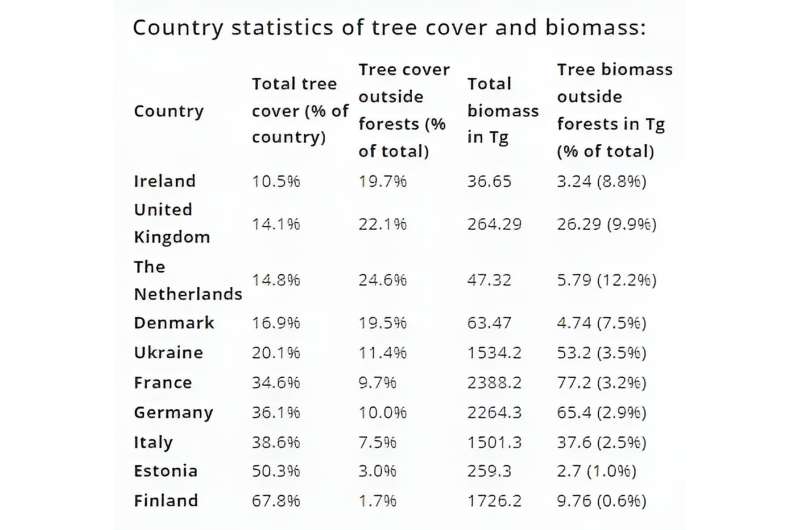A new report has uncovered the vast biomass and climate potential for trees outside forests in Europe’s urban, rural and agricultural areas, which have not yet been captured in forest inventories.
Using an algorithm combining satellite imagery and artificial intelligence, researchers reveal that Europe has more than 15 million hectares of trees outside forests, which equates to more than 1 billion tonnes of additional biomass.
The researchers fed the algorithm detailed satellite imagery of Europe, which was used to calculate the amount of tree cover within 3m of the tree crown outside forested areas in each country.

It reveals the potential for carbon storage, which the researchers said “ought to be included in climate models and biomass inventories.”
Led by the University of Copenhagen’s Department of Geosciences and Natural Resource Management, they calculated tree coverage with 92.4% accuracy in what amounts to the first capture of the total tree cover across Europe.
“The quality of our AI’s results comes very close to that of satellite images, which are very expensive to produce in the scale investigated here,” says PhD student Siyu Liu, the study’s first author.
It found that the Netherlands, the UK, Ireland, and Denmark have the highest tree cover outside forest areas – with the Netherlands having nearly 25% of tree cover outside forests and more than 8% in urban cities.
In the UK, 23% of the country’s tree cover is outside forests, whilst for Ireland, the amount is just shy of 20%.
According to Ms Liu, the proportion of tree cover outside forest areas is significantly smaller for forest-rich countries.
“For example, just under 2% of Finland’s tree cover is found outside the forests.”
“In European countries with many large forested areas, trees outside forests don’t make much difference,” Associate Professor Martin Brant said.
“But in countries like Denmark, the Netherlands, the UK and Ireland, whose forest resources are much smaller, these trees play an important role in biodiversity, microclimate, habitats, landscape values, and hydrological cycles.”

The latest study is one in a long series of studies conducted over the past few years that have shed light on tree cover in the Sahara and other parts of Africa, among other regions, using advanced technology using detailed satellite imagery and artificial intelligence.
According to Associate Professor Martin Brandt, mappings with this precision and detail had been impossible until now.
He said technology will make it easier for researchers to monitor forests and biomass now and in the future.
“Our method makes it possible to conduct more frequent and rapid monitoring at a time when landscapes change rapidly, and the timely and accurate assessment of carbon stocks is most important.”






